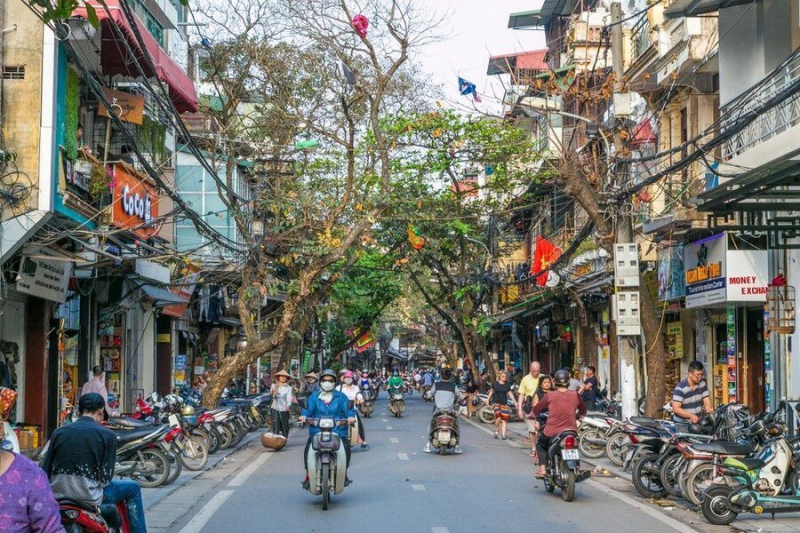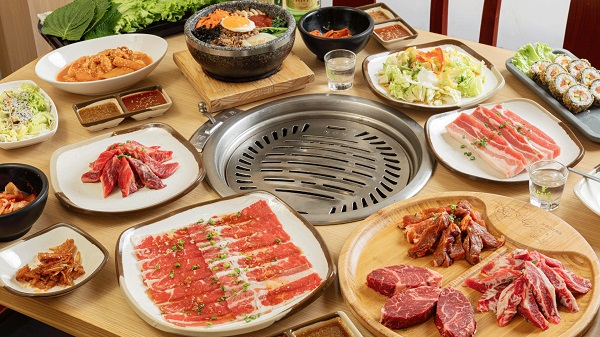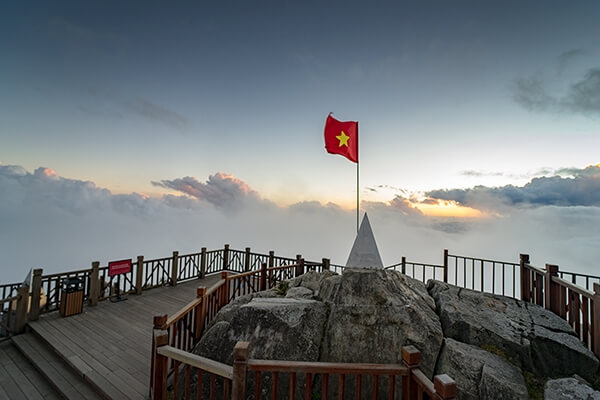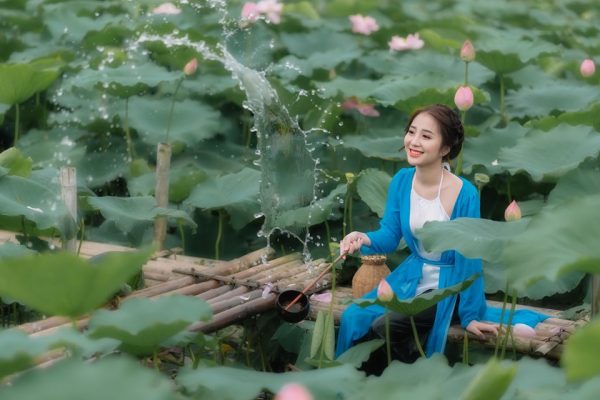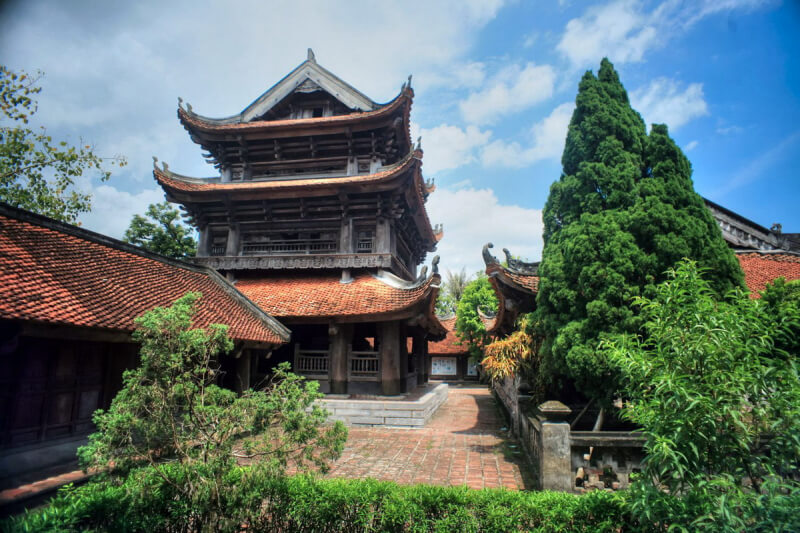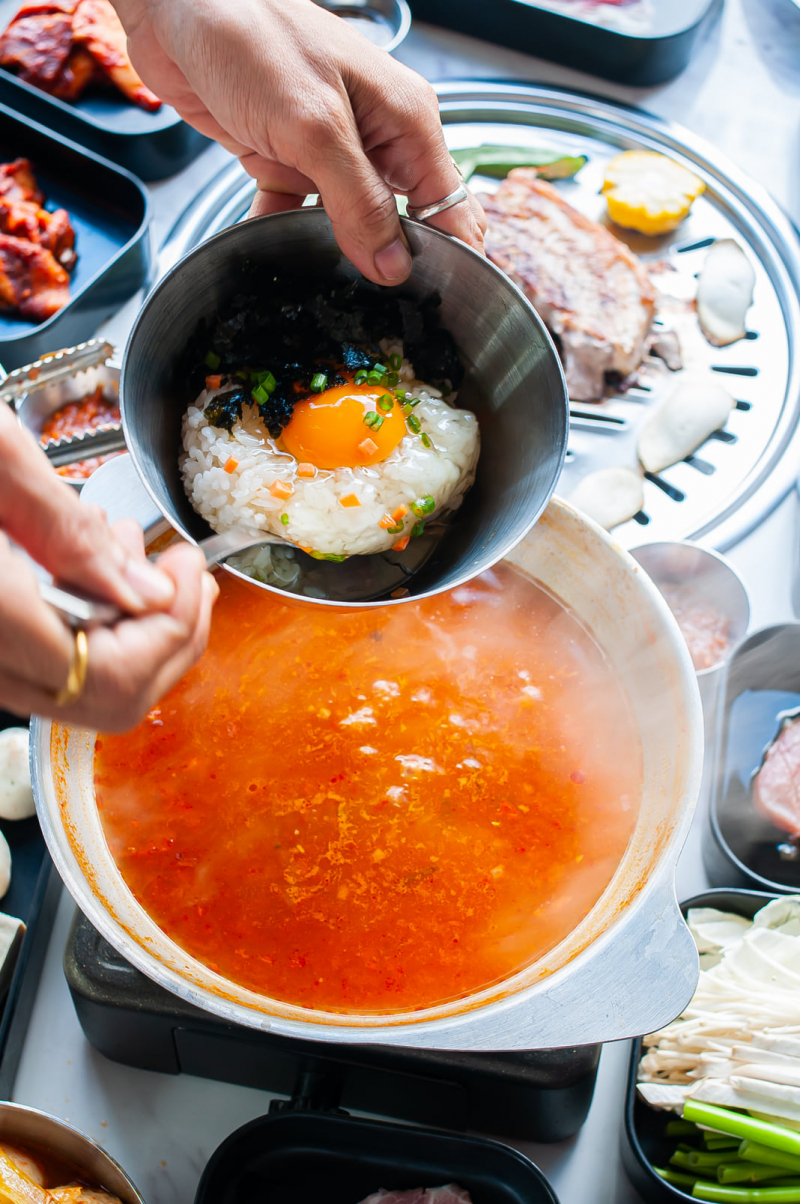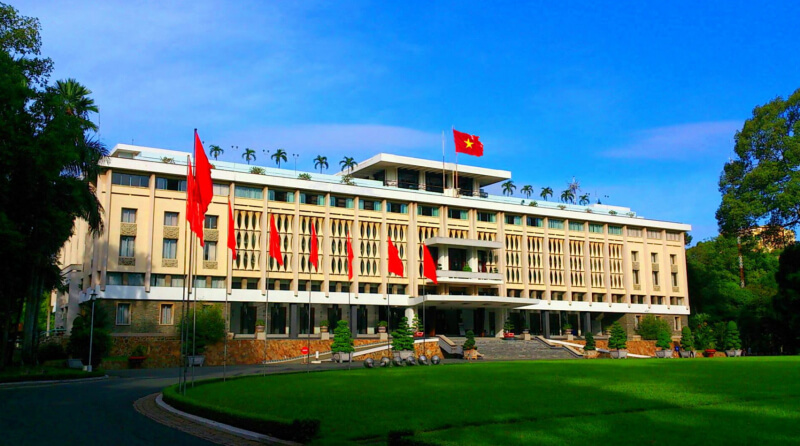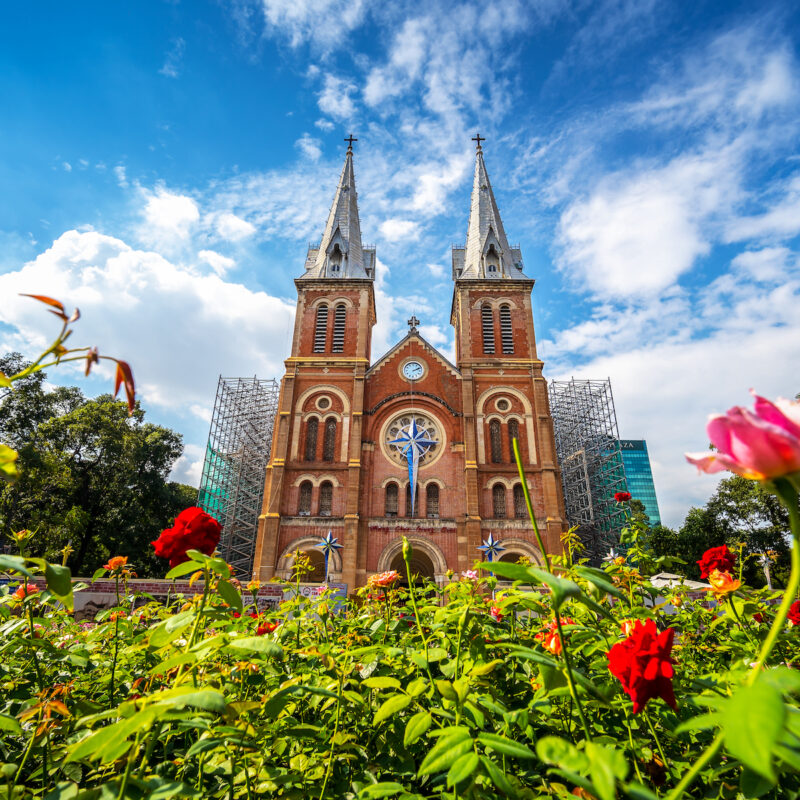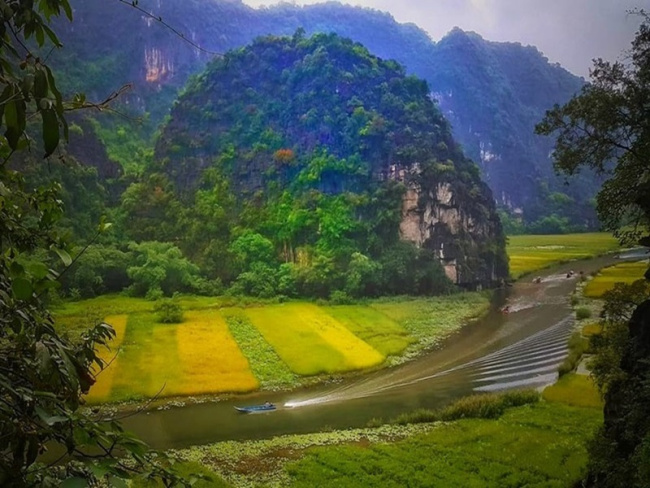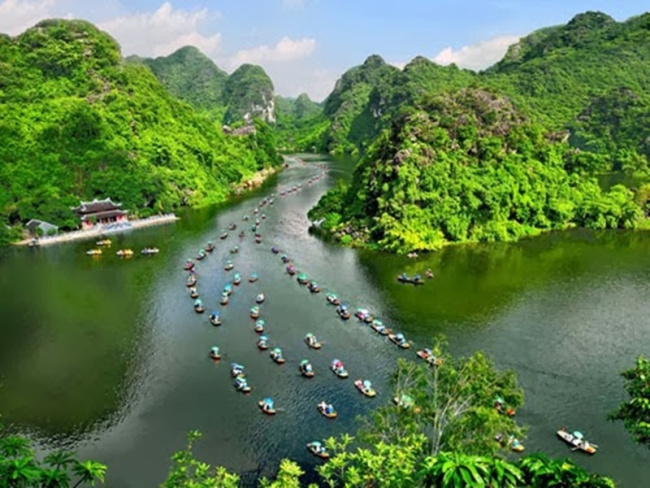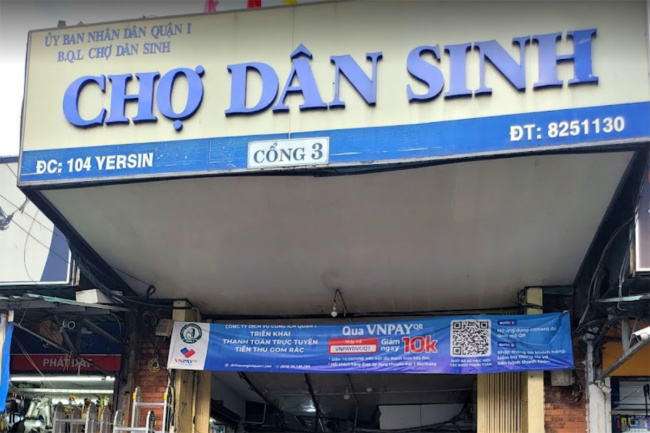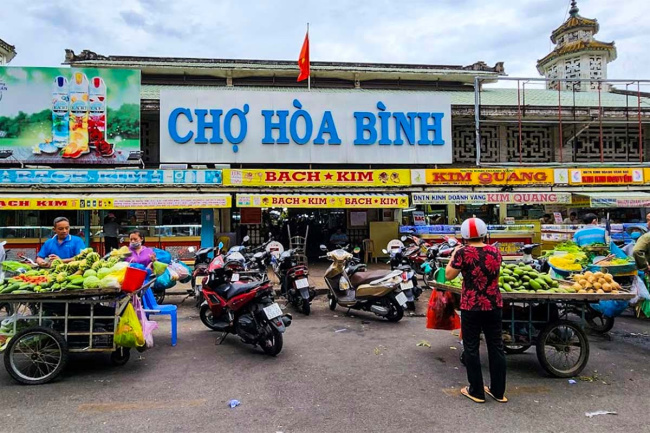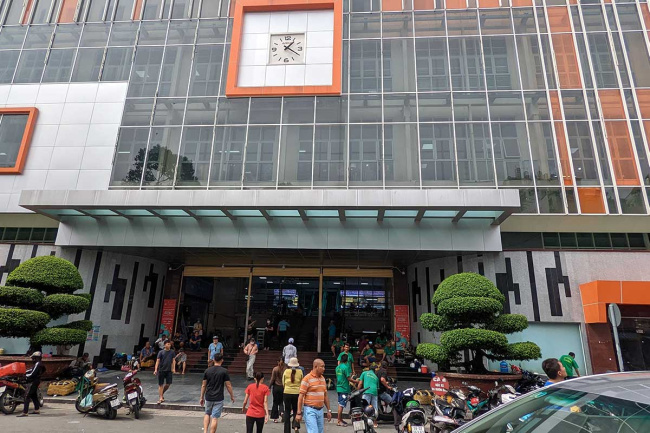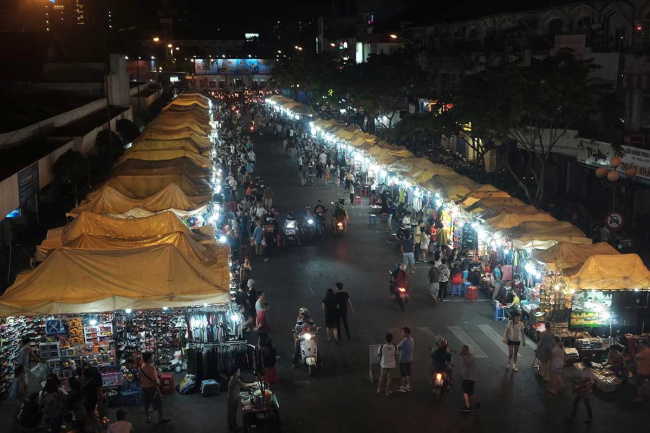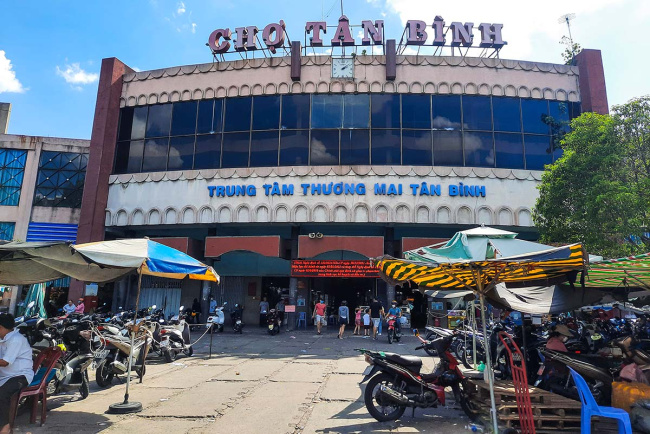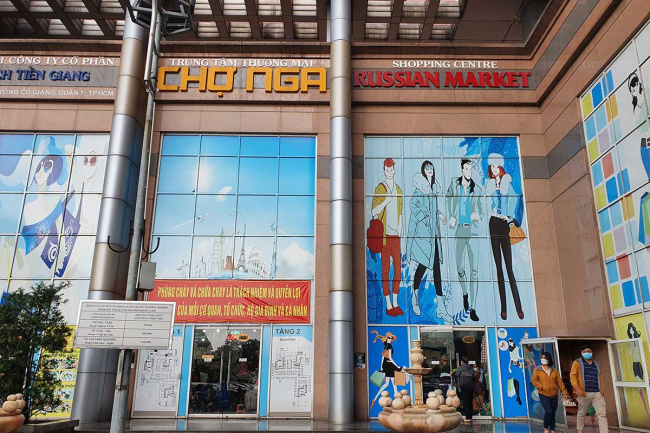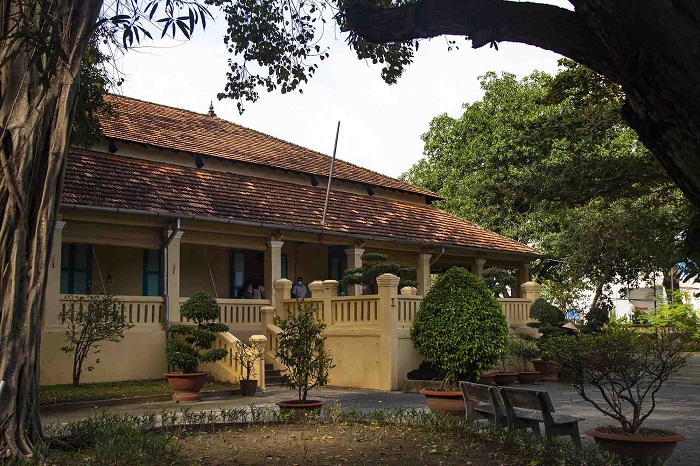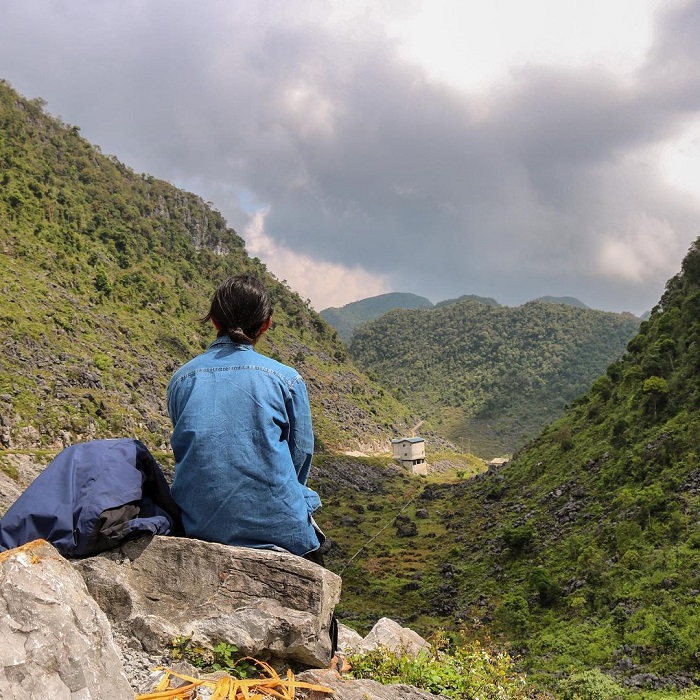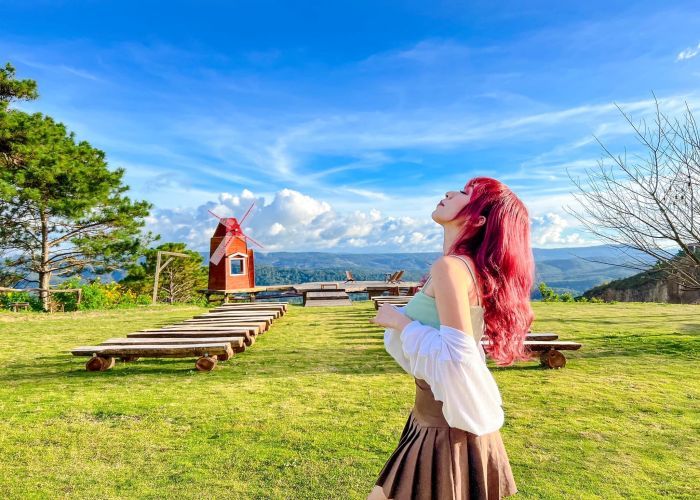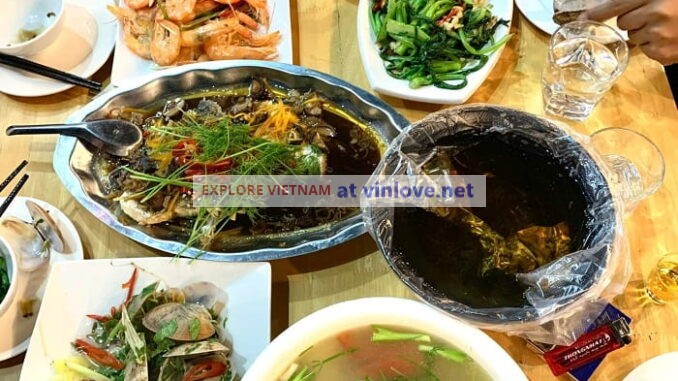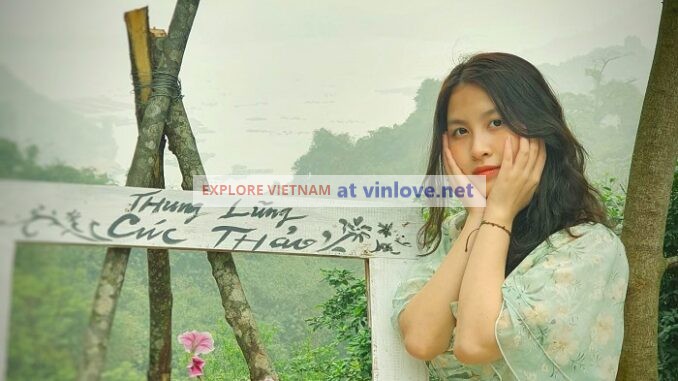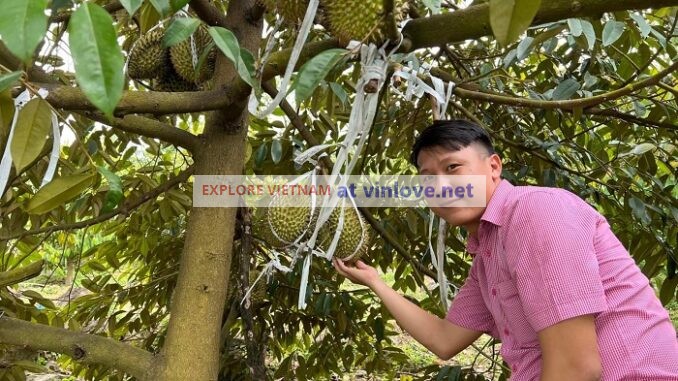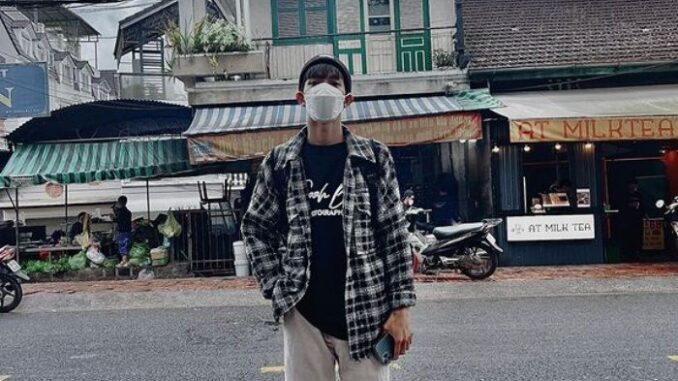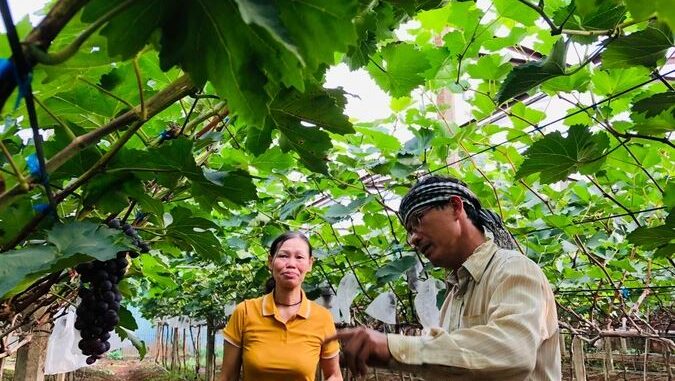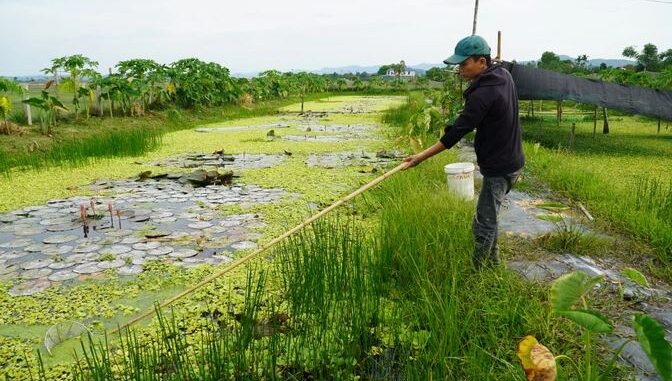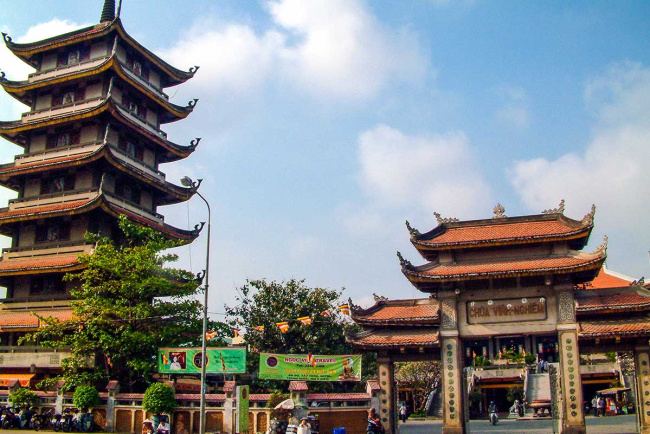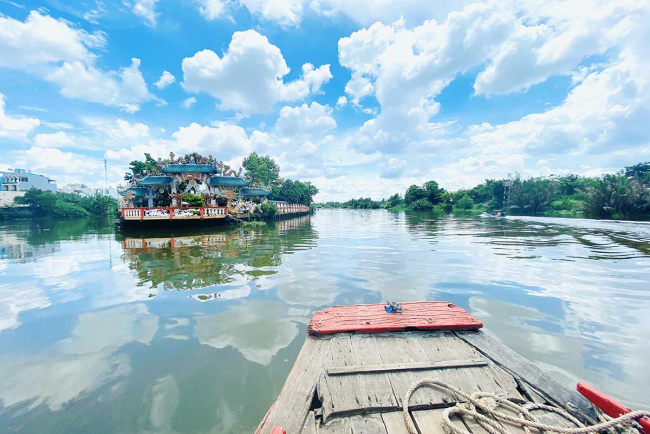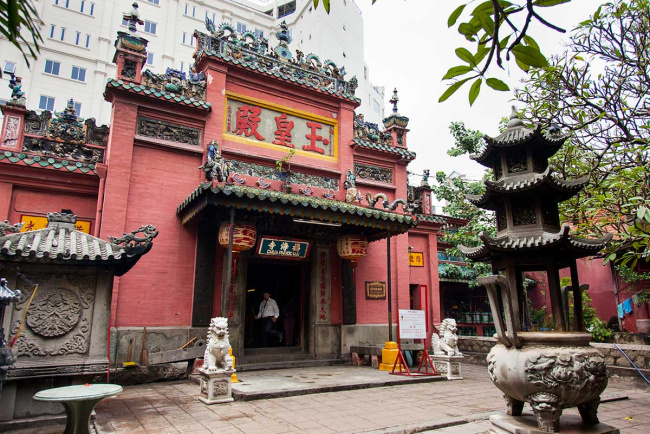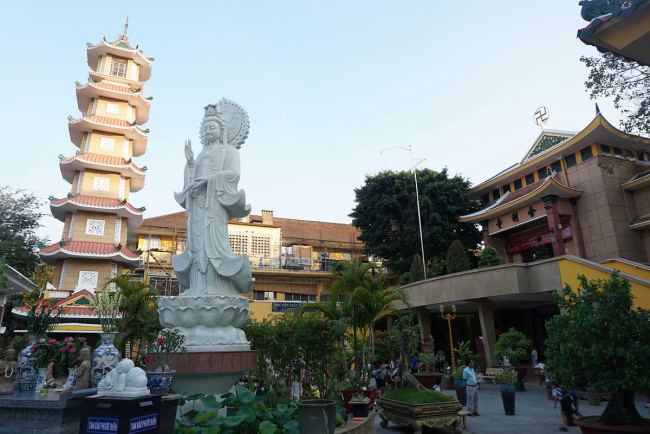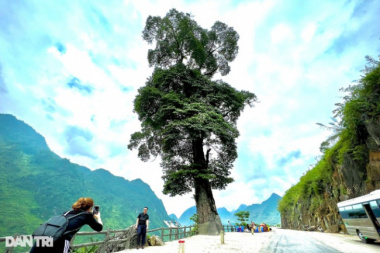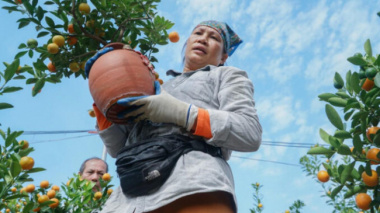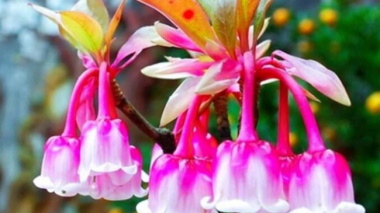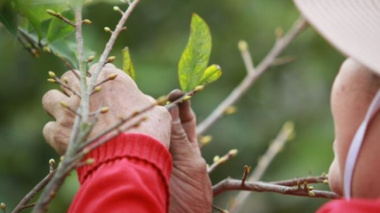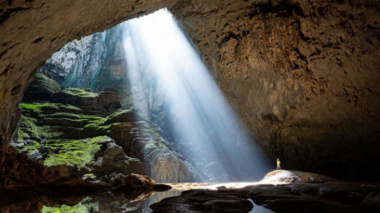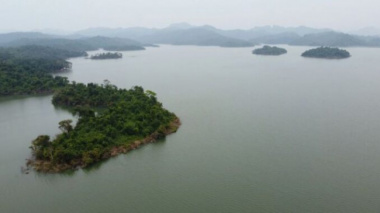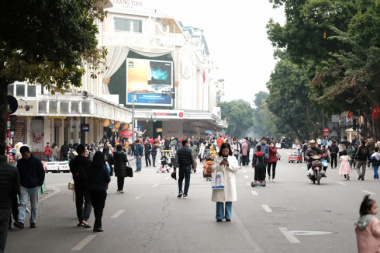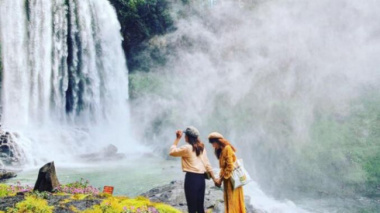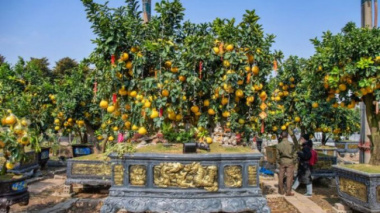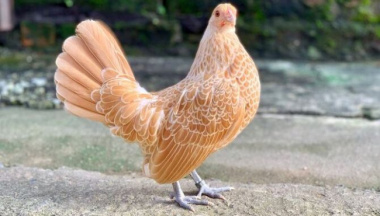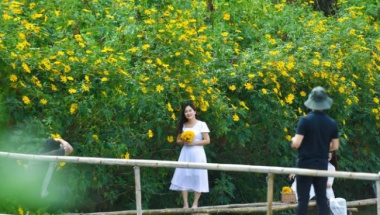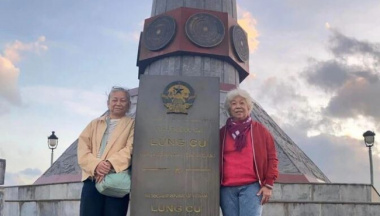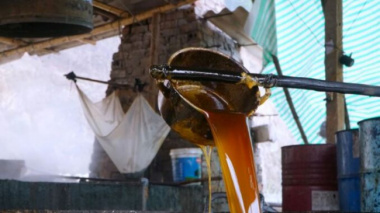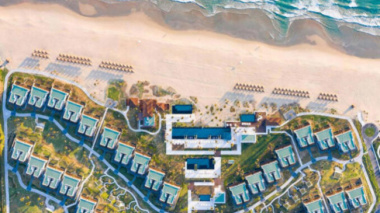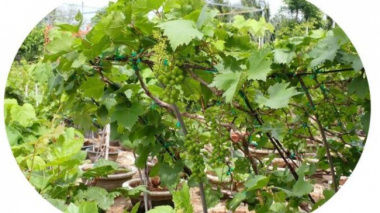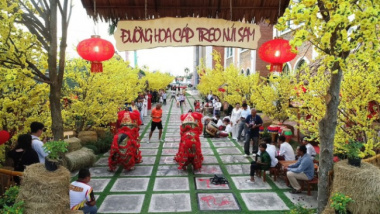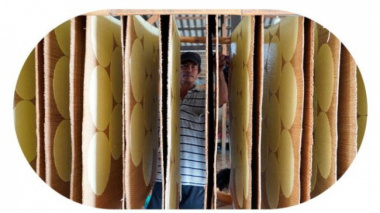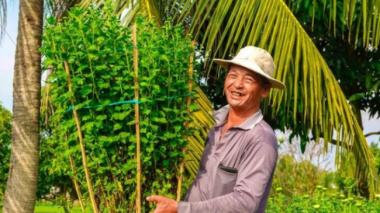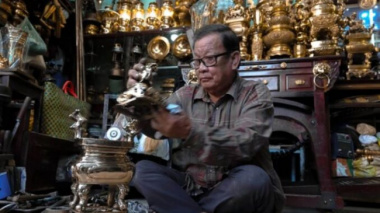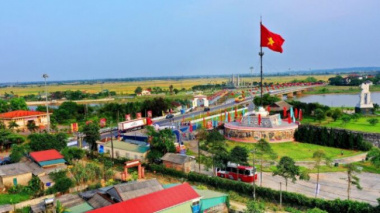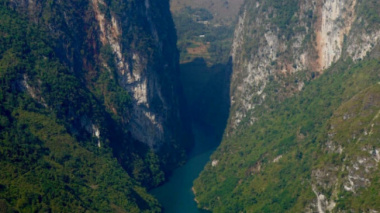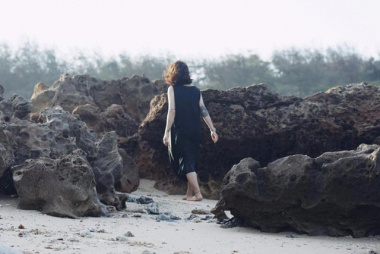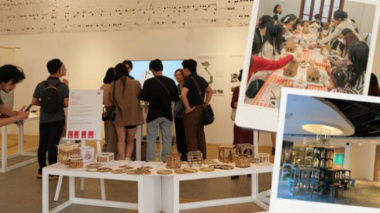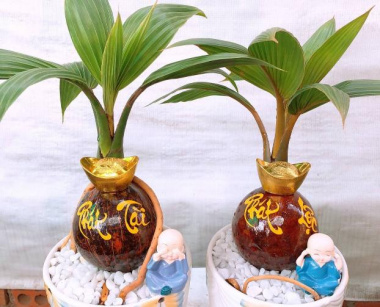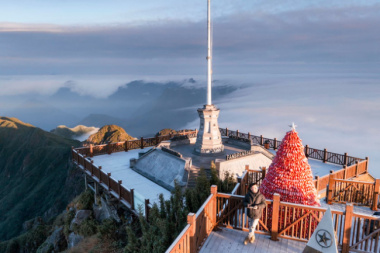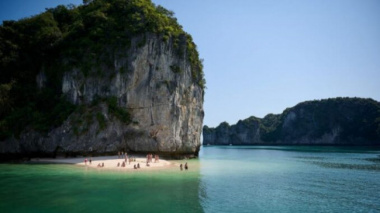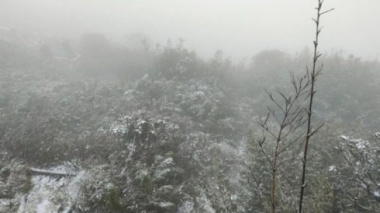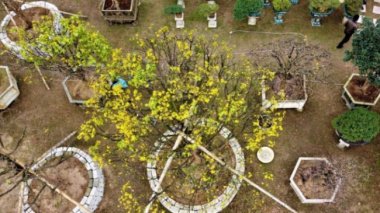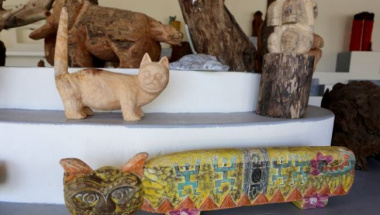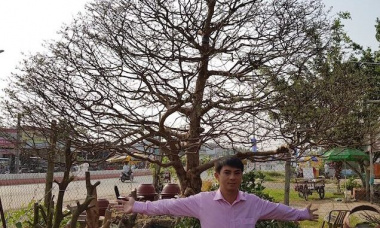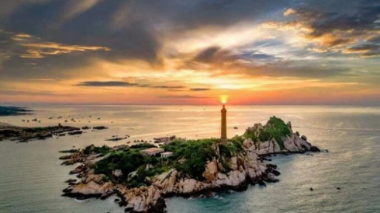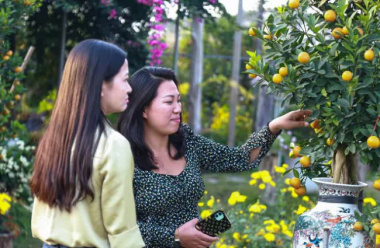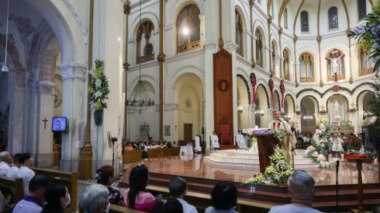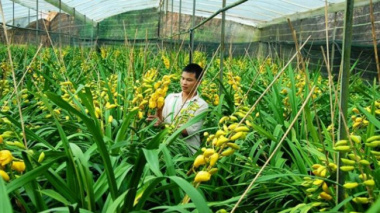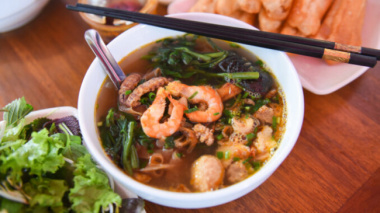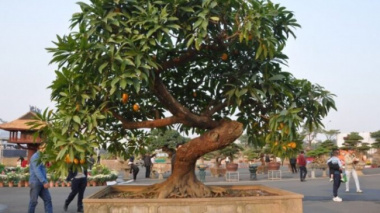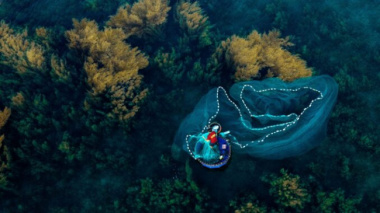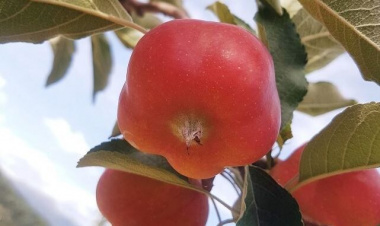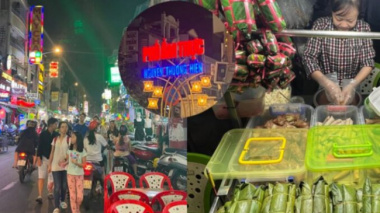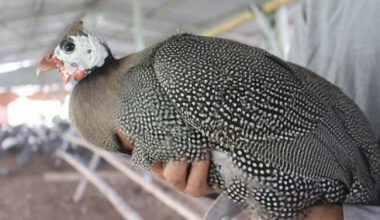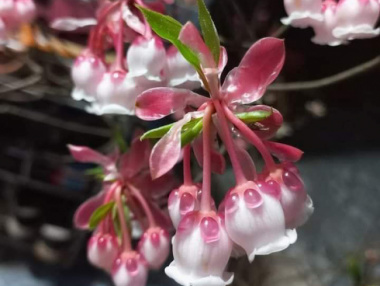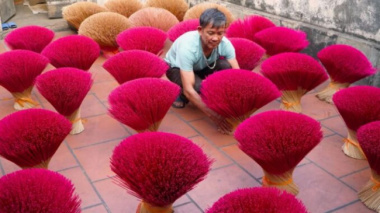9 Famous Vietnamese Buddhist Pagodas
- Perfume Pagoda – Hanoi
- Tran Quoc Pagoda – Hanoi
- One Pillar Pagoda – Hanoi
- Jade Emperor Pagoda – Ho Chi Minh City
- Xa Loi Pagoda – Ho Chi Minh City
- Vinh Nghiem Pagoda – Ho Chi Minh City
- Linh Phuoc Pagoda – Da Lat
- Bai Dinh Pagoda – Ninh Binh Province
- Vam Ray Pagoda – Tra Vinh
As a Buddhist country, Vietnam is rich in beautiful temples and eye-catching pagodas. From the city centers of Hanoi and Ho Chi Minh City to the isolated mountains of the Ninh Binh Province, there’s usually a Buddhist temple nearby.
Many of these historical places in Vietnam were built hundreds of years ago. Blessed with striking architecture, splendid gardens, and stunning visual art, here are some of the most notable and famous pagodas to visit, in no particular order
Perfume Pagoda – Hanoi

Perfume Pagoda, Ha Noi. Photo: Patrik M. Loeff
Staring with the country’s capital city, there’s no shortage of opulent pagodas. Though they range in size, age, and appearance, each one of these temples boasts plenty of beauty and atmosphere. Hanoi’s Perfume Pagoda is one of the most beautiful in the entire country. Completed in the 15th century, these enduring places of worship have stood through battles, invasions, and wars.
Although minor changes and renovations have taken place throughout the years (including after the American War) the pagodas remain as they would have appeared almost 700 years ago. The very first temple seen on approach, Den Trinh is notable for its two statues of kneeling elephants.
The pagoda is thought to be dedicated to a Hung King General and is also known as Presentation Shrine. Built during the reign of King Le Thanh Tong (1460-1497) the Thien Tru Pagoda (Heaven Kitchen) features a large bell tower and magnificent statues. Visitors can board a cable car (or walk, if they’d prefer) to the stunning Huong Tich Cave.
This grand grotto has a mouth resembling that of a fire-breathing dragon and houses the Chua Trong (Inner Temple). You’ll also find an inscription reading ‘’Nam thien de nhat dong’’ meaning ‘’the foremost cave under the Southern Heavens’’. The inscription is thought to date as far back as 1770. Huong Tich Cave also features grand statues and majestic, overhanging stalagmites.
Though the cable car ride makes things easier for tourists, many locals still prefer to take the stairs as it is seen as more respectful to do so. Perfume Pagoda is also the site of the famous Perfume Festival which takes place between mid-February and March each year.
Tran Quoc Pagoda – Hanoi
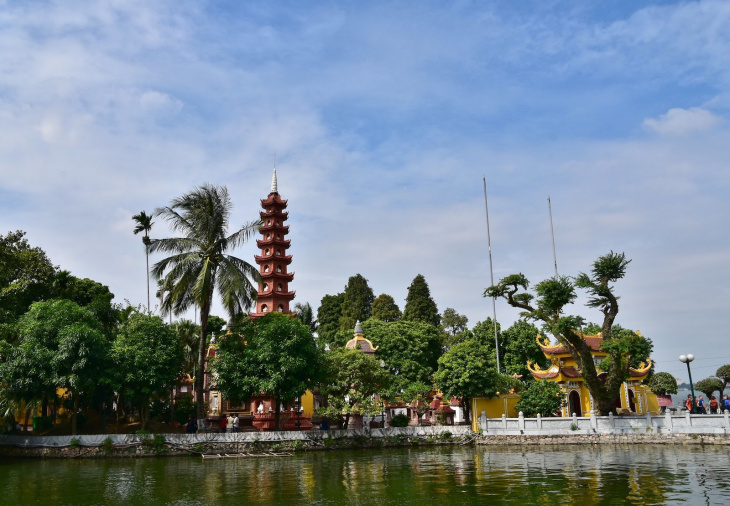
Tran Quoc Pagoda. Photo: Richard Mortel
One of the oldest and most famous pagodas in Vietnam, Tran Quoc Pagoda has been a staple of Hanoi’s skyline for over a thousand years. It dates back to the Ly Nam De Dynasty in the middle of the sixth century. Its 15-meter high tower features eleven levels.
Situated on an islet on West Lake, the Tran Quoc Pagoda has housed several generations of Buddhist monks who dedicate their time to teaching the public Buddhist values. Within the site, there’s a historical museum and a house dedicated to incense burning. Visitors can leave food, money, or other gifts to bless themselves with good luck and fortune.
There are also ancient statues on display around the museum, each one painstakingly carved with photorealistic detail.
One Pillar Pagoda – Hanoi

One Pillar Pagoda. Photo: Art Purée
Built on a tranquil pond, Hanoi’s One Pillar Pagoda was built between 1028 and 1054. Though small in stature, One Pillar Pagoda has cultivated an important reputation in the sprawling city of Hanoi. Its serene garden and benches are perfect spots for some introverted self-reflection.
Inside the temple, there’s a shrine dedicated to the Buddhist deity Quan Am and a bo tree which, according to legend, is a successor to the one in which Buddha achieved enlightenment. During the French War, One Pillar Pagoda was targeted with explosives, damaging the pillar on which the temple is built. This was replaced with a stronger concrete pillar which stands to this day.
One of the most iconic pagodas in Vietnam, the quaint charm of One Pillar Pagoda is one of the most relaxing destinations in Hanoi and is a welcomed change from the hustle and bustle of this megacity.
Jade Emperor Pagoda – Ho Chi Minh City
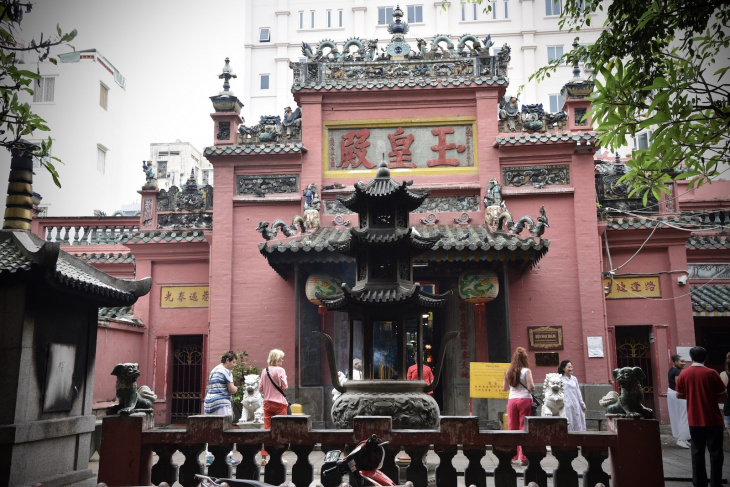
Jade Emperor Pagoda. Photo: Kent MacElwee
This world-famous megacity has an abundance of historic places of worship. A modern commercial and economical superpower, Ho Chi Minh City has never lost touch with its roots. Located in the heart of District 1, the Jade Emperor Pagoda was built in 1909 as a shrine to the Taoist god Ngoc Hoang.
This atmospheric temple is known for the incense which bellows out from deep within. A wander inside will take you past grand statues of generals and deities, partially obscured by the burning incense. The center of the pagoda features the altar of the Jade Emperor.
This section is often crowded by worshipping locals and well-wishing tourists and you can also buy incense here to support the pagoda and help continue its legacy. Known for its wood carvings, intricate sculptures, and tranquil pond, the Jade Emperor Pagoda is one of the busiest places of worship in Ho Chi Minh City.
A testament to the pagoda’s iconic status, it was visited by former U.S. President Barack Obama during his visit to Vietnam in May 2016.
Xa Loi Pagoda – Ho Chi Minh City
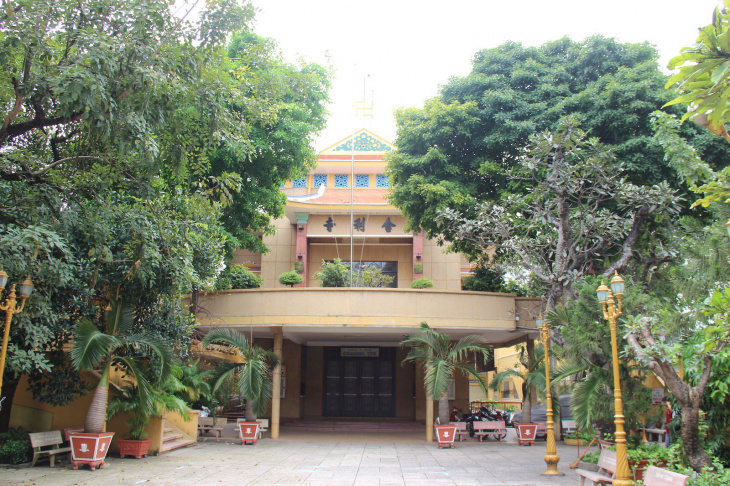
Xa Loi Pagoda. Photo: Gary Todd
The largest pagoda in Ho Chi Minh City, Xa Loi is located in the District 3 area. Though a relatively recent pagoda (construction was finished in 1956) Xo Loi has an illustrious history behind it. In 1963, a coup led by the Diem government culminated in an attack on the Xa Loi Pagoda.
After oppressed and persecuted monks barricaded themselves in for safety, armed guards used battering rams, firearms, and explosives to destroy the pagoda and desecrate the remains of martyred Buddhist monk Thich Quang Duc. Xa Loi’s bell tower rang to alert people of the attack, but heavy gunfire and screaming quickly drowned out this noise.
After the attack, the pagoda served as the base of the Vietnamese Buddhist Association before opening its doors to tourists. The pagoda itself features statues, pictures, and miniature sculptures of Buddhist deities and icons. There’s a memorial to Thich Quang Duc, for example, and a statue of Buddha crafted by artists from the Bien Hoa Art School.
Tourists should aim to visit Xa Loi Pagoda during off-peak times of the year. Like all major places of worship, the shrine gets extremely busy during festival times and national holidays.
Vinh Nghiem Pagoda – Ho Chi Minh City
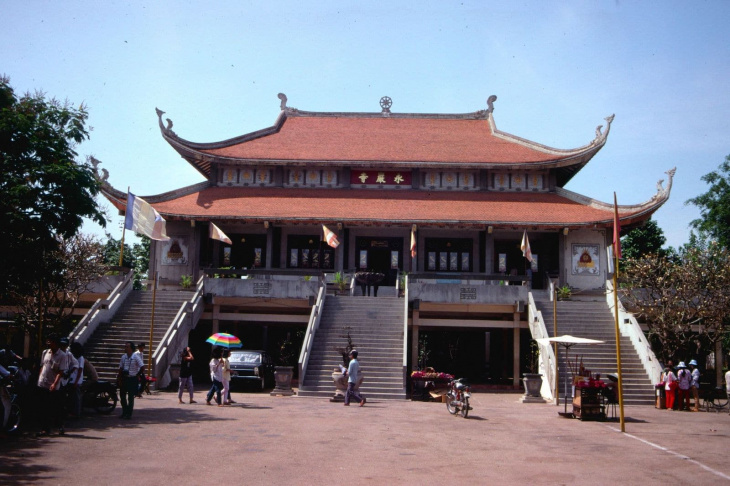
Vinh Nghiem Pagoda. Photo: TommyJapan1
Located around 20 minutes from Ben Thanh Market, the striking Vinh Nghiem Pagoda was completed in 1971. The 6,000 square meter site features the first traditional Vietnamese pagoda made from concrete and a 130 ft high tower. Known as one of the most popular pagodas in Ho Chi Minh City, this grand temple attracts thousands of worshippers each month.
The pagoda features statues, paintings, sculptures, and other hallmarks of Mahayana Buddhist philosophy. Be sure to pay respects to Goddess Kuan Yin in the courtyard for good blessings and tidings.
Linh Phuoc Pagoda – Da Lat
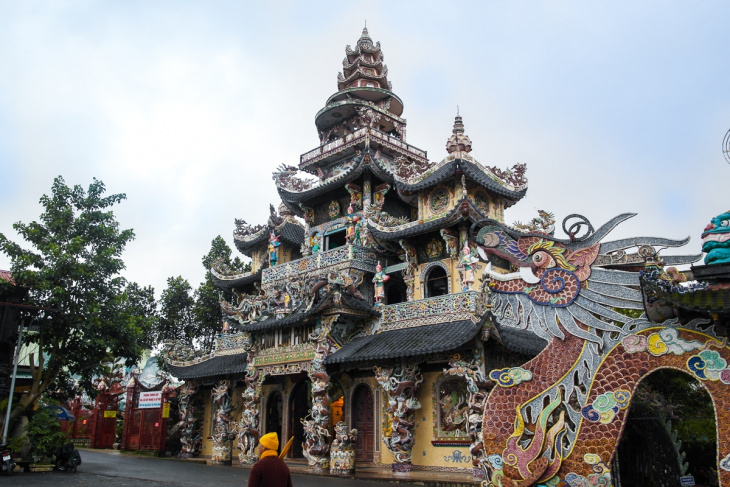
Linh Phuoc Pagoda. Photo: Mr & Mrs Backpacker
Beautiful places of worship are not limited to big cities, however, and grand temples can be found in every corner of the country. The magical Linh Phuoc Pagoda is filled with intricate ornaments and heavenly trinkets. For one, it houses the largest bell in Vietnam along with its longest glass dragon sculpture.
Located in Da Lat, Linh Phuoc Pagoda is built from glass debris, shards of pottery, and fragments of porcelain. It was finished in 1952 after three years of meticulous construction and is considered one of the most amazing places of worship in Southeast Asia.
In addition to the famous dragon statue, there are multiple statues situated around the pagoda, each painstakingly handcrafted from recycled materials. After you’ve finished exploring every hidden nook and cranny, you can refresh yourself at the local gift shop and marvel at the wonderful works of religious art on display at the Linh Phuoc Pagoda.
Bai Dinh Pagoda – Ninh Binh Province
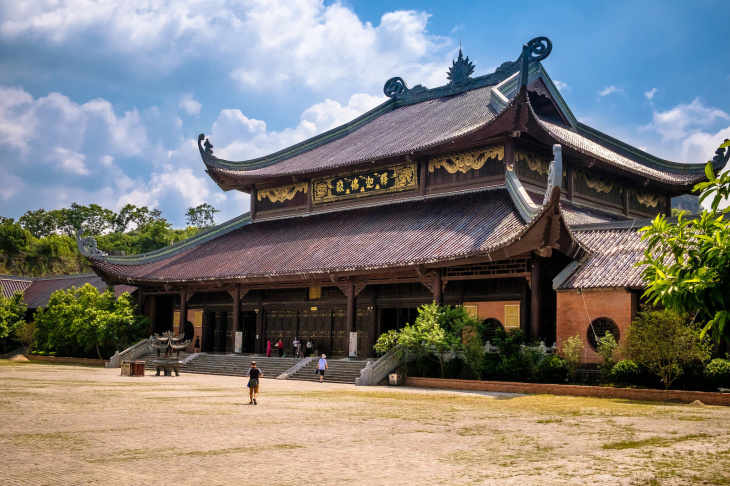
Bai Dinh Pagoda. Photo: Brian’s Dallas Habitat For Humanity Photos
The Ninh Binh Province of Vietnam houses Southeast Asia’s biggest Buddhist complex. There are actually two main pagodas here – each built hundreds of years apart. The first, built in the 11th century, was erected during the reign of the Ly Dynasty. The second, built in 2003, is located adjacent to the older temple and encompasses a site of 7 million square meters.
The main tower of the newer pagoda is constructed from materials sourced from surrounding villages. Views from the top of this tower are striking and offer a panoramic view of the surrounding mountains and valleys.
Featuring grand statues, intricate embroidery, and stunning painting, the Bai Dinh Pagoda offers a holistic Buddhist experience and a visit is perfect for those looking to immerse themselves in Buddhist culture.
Vam Ray Pagoda – Tra Vinh

Pagoda in Tra Vinh. Photo: Axel Drainville
The largest Primitive Buddhist temple in Vietnam. Its striking appearance and gold facade make it one of the most distinctive pagodas in the country. Famous for its giant reclining Buddha statue, the Vam Ray pagoda has a distinctly royal feel. Its gold-plated gate greets visitors and well-wishers and the interior resembles a European grand hall.
Despite its recent construction (completed in 2012), the Vam Ray Pagoda has already carved a reputation as one of the country’s most impressive. Not only is the main architecture stunning, but the statues and artwork found inside are equally beautiful.
Buddhist culture has always been known for its penchant for beautiful buildings and opulent artwork. Whether you wish to learn about Buddhism or simply enjoy the architecture, each one of these pagodas is certainly worth a visit.
Đăng bởi: Tuấn Dương Official


